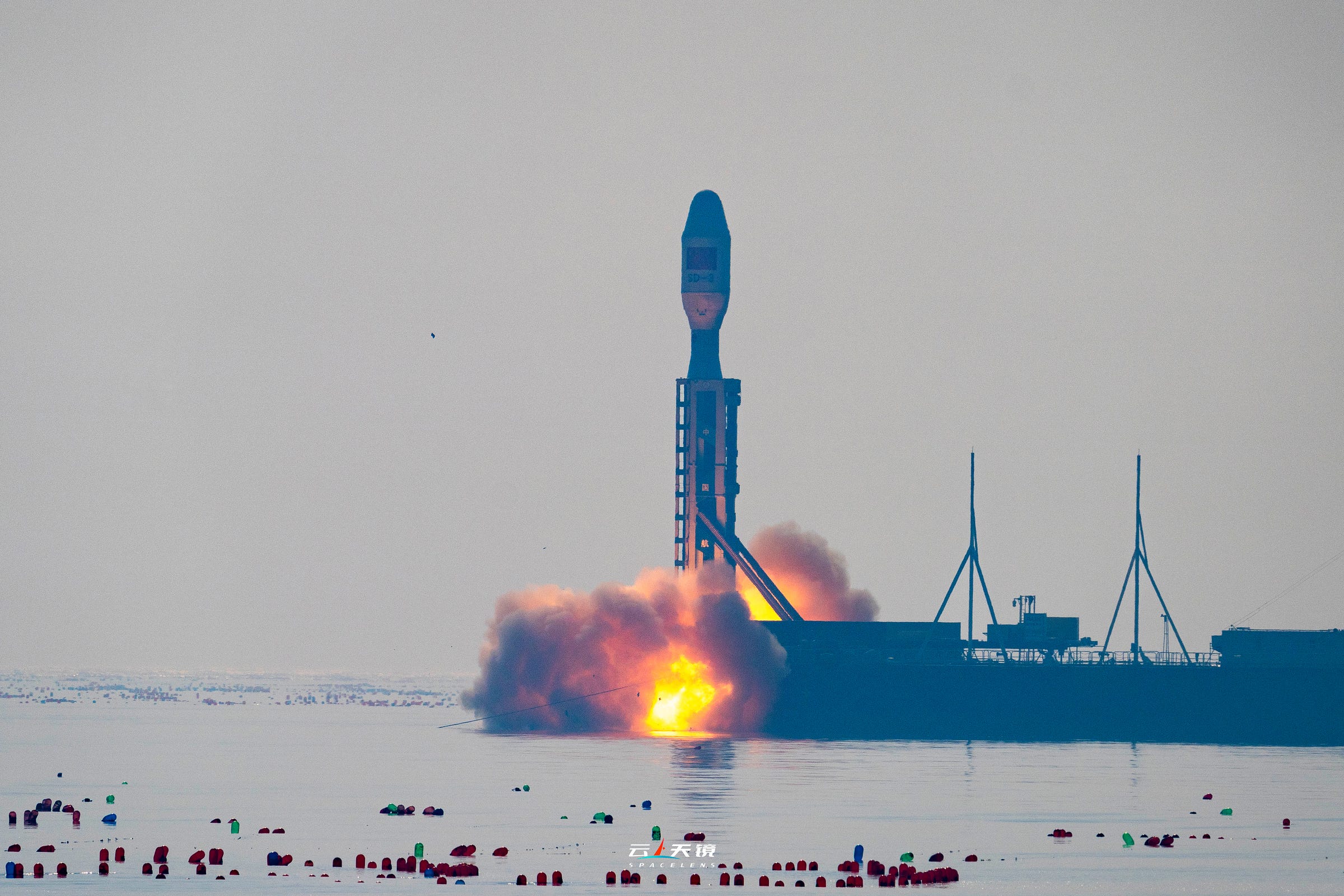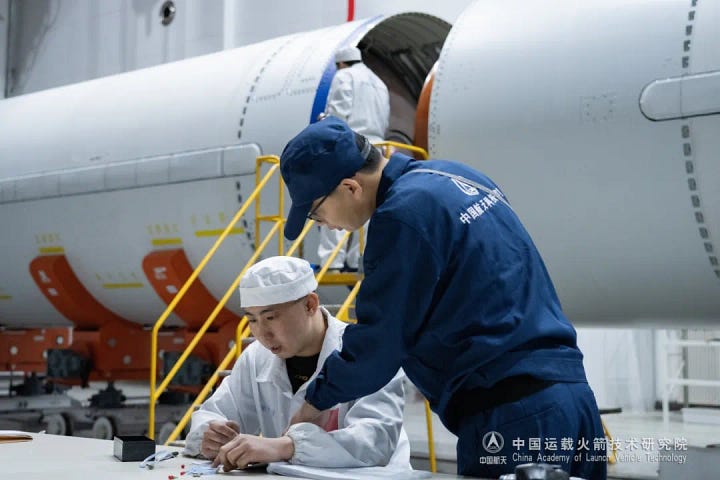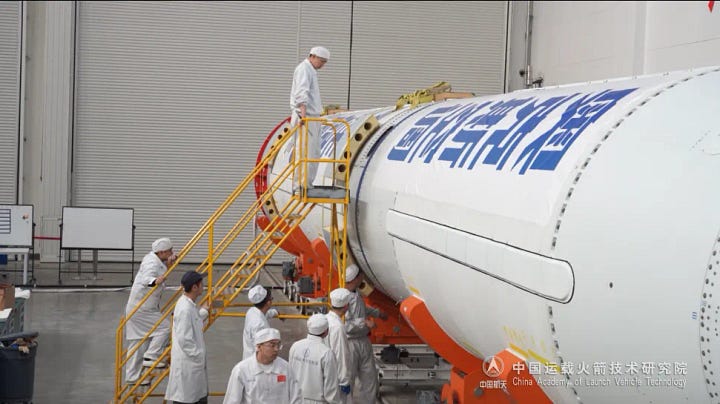A Group of Navigators! [Jielong-3 Y5]
China's first sea launch of 2025 has carried ten satellites into orbit.

Beginning China’s sea-based launches for the year was a Jielong-3 blasting off from the Dongfang Hangtiangang launch platform at 11:00 am China Standard Time, or 03:00 am Universal Coordinated Time, off the coast of Haiyang (海阳市) in the Yellow Sea. This launch was administered by the Taiyuan Satellite Launch Center.
Onboard Jielong-3 were ten CentiSpace-1 (厘空间01组10颗) satellites being delivered to a 650-kilometer 55-degree low Earth orbit for Beijing Future Navigation Technology Co Ltd (北京未来导航科技有限公司), also known as Future Navigation (未来导航). Each CentiSpace-1 satellite is believed to be approximately 100 kilograms in weight with a ten-year operation life while including high-speed inter-satellite communications links.
The CentiSpace network aims to provide high-accuracy global navigation services with a positioning accuracy as low as ten centimeters. According to Future Navigation, services for the constellation include surveying, mapping, disaster monitoring, smart grids, communication networks, ocean engineering, UAV positioning, smartphone, positioning, and Internet-of-Things device positioning. At least twenty satellites are said to be needed for the network to offer basic services.
Future Navigation currently has two master stations for the CentiSpace network along with two telemetry, tracking, and control stations as well as over ten monitoring stations. Before today's launch, the company had five test satellites in orbit, launched in September 2018, September 2022, and October 2022.
In the future, Future Navigation hopes to have one hundred and ninety satellites in orbit to provide worldwide services, including over the north and south pole. One hundred and twenty of these satellites are planned to be in a 975-kilometer 55-degree orbit, another thirty are set to be in a 1,100-kilometer 87.4-degree orbit, and forty more are expected to be in a 1,100-kilometer 30-degree orbit.
Today’s Jielong-3 also boasts an improvement in the rocket’s payload capacity, able to lift 1,600 kilograms into orbit, a 100-kilogram improvement over the original 1,500 kilograms. Other improvements implemented are also said to further adapt the rocket to more sea-launch conditions, expanding the rocket’s capability to launch under certain harsher weather conditions. Gao Lijun from the China Aerospace Science and Technology Corporation added:
“In the future, the Jielong-3 rocket will undergo further improvements and upgrades to reduce the cost for the commercial launches and increase its carrying capacity,” — “We estimate that after the improvements, its carrying capacity will rise from 1.5 tons to about 2 tons”
This launch was the 5th mission for the Jielong-3 launch vehicle, along with being the 2nd launch from China in 2025.
Integration footage via 中国火箭, launch footage and live stream via International Rocket Launches on YouTube
Check out the previous Jielong-3 launch
What is Jielong-3?
This section is for those less familiar with China's various commercial launch vehicles.
Jielong-3, also referred to as Smart Dragon-3, is a four-stage solid-fueled launch vehicle manufactured by the China Academy of Launch Vehicle Technology. The vehicle is operated commercially via a wholly-owned subsidiary of the China Academy of Launch Vehicle Technology called China Rocket. All four stages are believed to burn an unspecified solid propellant with the first-stage generating a reported 200 tons of thrust.
The payload capacity of the launch vehicle is currently as follows:
1,600 kilograms to a 500-kilometer sun-synchronus orbit.
On a launch platform, Jielong-3 is believed to be 31 meters tall. Details about the four stages of the vehicle are scarce but the first two stages have a diameter of 2.64 meters, with the fairing having a diameter of 3.35 meters. When prepared for launch Jielong-3 weighs a believed 145,000 kilograms.
So far Jielong-3 has flown from sea launch platforms in the East China Sea, South China Sea, and Yellow Sea.







